San José, Costa Rica
| San José | |||
|---|---|---|---|
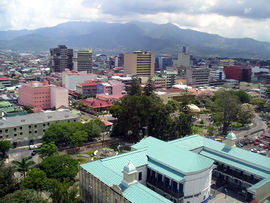 |
|||
|
|||
| Nickname(s): Chepe | |||
| Motto: Ad Meliora | |||
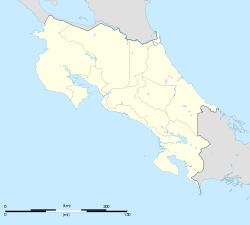 San José
|
|||
| Coordinates: | |||
| Country | Costa Rica | ||
| Province | San José Province | ||
| Canton | San José Canton | ||
| Founded | ca. 1738 | ||
| Capital as of | May 16, 1823 | ||
| Government | |||
| - Type | Democratic Republica | ||
| - Mayor | Johnny Araya Monge (PLN) | ||
| Area | |||
| - City | 44.62 km2 (17.2 sq mi) | ||
| Elevation | 1,161 m (3,809 ft) | ||
| Population (December 2007) | |||
| - City | 350,535(2) | ||
| - Metro | 1,611,616 (2) | ||
| - Demonym | Josefino/a | ||
| Time zone | Central Standard Time (UTC-6) | ||
| Postal Code | 10101 | ||
| Area code(s) | + 506 | ||
| HDI (2007/2008) | 0.846 – high | ||
| Website | http://www.msj.go.cr | ||
San José ("Saint Joseph", Spanish: San José, pronounced [saŋ xoˈse]) is the capital and largest city of Costa Rica. Located in the Central Valley, San José is the seat of national government, the focal point of political and economic activity, and the major transportation hub of this Central American nation.
Founded in 1738 by order of Cabildo de León, San José is one of the youngest capital cities in Latin America by year of conception, though it was not named capital until 1823.[1] Today it is a modern city with bustling commerce, brisk expressions of art and architecture, and spurred by the country's improved tourism industry, it is a significant destination and stopover for foreign visitors.[2]
The population of San José Canton is 365,799,[3] though the metropolitan area stretches beyond the canton limits and comprises a third of the country's population. San José exerts a strong influence on a wider range because of its proximity to minor cities (Alajuela, Heredia and Cartago) and the country's demographic assemblage in the Central Valley.[4]
The city lies at a mean elevation of 1,161 m above sea level, and enjoys a stable climate throughout the year, with an average temperature of 25oC (77oF) and annual precipitation of 1800 mm, more than 90% of it falling in the rainy season from May to November.[5]
University of Santo Tomás, the first university of Costa Rica was established here in 1843. That institution maintained close ties with the Roman Catholic Church and was closed in 1888 by the progressive and anti-clerical government of President Bernardo Soto Alfaro as part of a campaign to modernize public education. The schools of law, agronomy, fine arts, and pharmacy continued to operate independently, but Costa Rica had no university proper until 1940, when those four schools were re-united to establish the modern University of Costa Rica (UCR), during the reformist administration of President Rafael Ángel Calderón Guardia. San José serves as the headquarters of the Inter-American Court of Human Rights. The city is served by Juan Santamaría International Airport, 23 km west of downtown, in the city of Alajuela.
Contents |
Districts and barrios
San José is divided into 11 districts (distritos):
- Catedral
- El Carmen
- Hatillo
- Hospital
- La Uruca
- Mata Redonda
- Meire
- Pavas
- San Francisco de Dos Ríos
- San Sebastián
- Zapote
The districts are divided up into a number of barrios (neighborhoods).[6]
 Districts of San José |
 Barrios of San José |

Tranportation
Public Transport is provided by buses. Private companies are connecting the different city quaters with each other and the suburbs. During Rush Hours most buses are stuck in traffic as in most capital cites but in general the system is efficent and cheap. Services to other major cities in the counrty are also provided by private companies from different central bus stations throughout the city center.
Cuisine
Costa Rican native cuisine (Comida tipica) is not spicy, but it is tasty and simple, and in San José, it is easy to find. The style of food is wholesome and reasonably priced. Throughout San José, the most popular food is the national dish of Gallo pinto,fried rice and black beans. This dish can be easily found, particularly as a breakfast staple. Gallo pinto becomes the casado at lunch time and is varied with rice and beans supplemented with cabbage-and-tomato salad, fried plantains, and meat. [7]
Climate
San José City lies in the Torrid Zone and is in a tropical rainforest. However its elevation gives it a mild climate. Under the Köppen climate classification it features a Tropical wet and dry climate that borders on a Subtropical highland climate. The temperature ranges between 15 and 30 °C (59 and 86 °F). The rainy season is from May to late November, but cloudiness and rainfall can occur during the dry season. The weather is also very windy; this may decrease the apparent temperature even more. Relative humidity tends to range between 60% and 90%.
| Climate data for San José, Costa Rica | |||||||||||||
|---|---|---|---|---|---|---|---|---|---|---|---|---|---|
| Month | Jan | Feb | Mar | Apr | May | Jun | Jul | Aug | Sep | Oct | Nov | Dec | Year |
| Average high °C (°F) | 25 (77) |
26 (79) |
28 (82) |
30 (86) |
30 (86) |
28 (82) |
28 (82) |
28 (82) |
27 (81) |
26 (79) |
26 (79) |
25 (77) |
27.3 (81.1) |
| Average low °C (°F) | 15 (59) |
15 (59) |
17 (63) |
19 (66) |
19 (66) |
18 (64) |
18 (64) |
17 (63) |
17 (63) |
17 (63) |
16 (61) |
15 (59) |
16.9 (62.5) |
| Precipitation mm (inches) | 15 (0.59) |
5 (0.2) |
20 (0.79) |
46 (1.81) |
229 (9.02) |
241 (9.49) |
211 (8.31) |
241 (9.49) |
305 (12.01) |
300 (11.81) |
145 (5.71) |
41 (1.61) |
1,799 (70.83) |
| Source: BBC Weather[8] | |||||||||||||
Attractions
There are numerous areas around San José:
- El Pueblo is an assortment of more than 50 bars, clubs, and shops.
- Calle de la Amargura in San Pedro near the University of Costa Rica has a wide selection of bars, restaurants and discos and serves drinks for relatively low prices. Pickpockets and criminals involved with drug smuggling and violent crimes are a cause of concern.
Both The National Theater (Teatro Nacional de Costa Rica) and The Melico Salazar Theatre offer hectic calendars of cultural activities, featuring acting and dance groups as well as orchestral musical presentations throughout the year.
The downtown area, located in the Central Edificio Correos building, is loaded with cafes. The National Theater and The Melico Salazar Theatre, where national coffee is prepared and served in typical Costa Rican ways.
There are also many museums and other attractions offering alternative ways of exploring the city. One of these is the Gold Museum, which offers an unusual view of various gold artifacts of the ancient Latin American civilizations. An interesting attraction is the Lankester Botanical Garden at the outskirts of San José. This gardens and many attractions not far from San José can be visited on the multiple day tours offered in the city. Other attractions include various bars and clubs which concentrate their activity on holding musical shows and events.
Sister cities
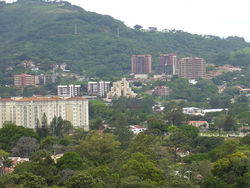
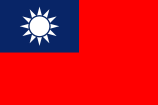 Taipei, Taiwan
Taipei, Taiwan Miami-Dade County, Florida, United States
Miami-Dade County, Florida, United States San Jose, California, United States
San Jose, California, United States Kfar Sava, Israel
Kfar Sava, Israel Okayama, Japan
Okayama, Japan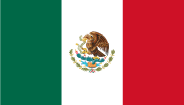 Guadalajara, Mexico
Guadalajara, Mexico La Paz, Bolivia
La Paz, Bolivia Beijing, China (2009)
Beijing, China (2009)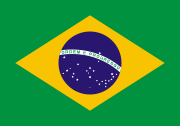 Rio de Janeiro, Brazil
Rio de Janeiro, Brazil
References
- ↑ History of San José, Costa Rica, by Spanish Abroad, Inc.
- ↑ Infoplease. San José, Costa Rica
- ↑ Total Population of Costa Rica by, for province, canton and district levels, December 2006, published by the National Institute of Statistics and Census(INEC)
- ↑ In San José, Costa Rica, effective metropolitan planning and selective infrastructure investment can improve the quality of life for the poor, by Rosendo Pujol, researcher of ProDUS on the World Bank Urban Research Symposium in Brasilia, Brasil, April 4–6, 2005
- ↑ BBC Weather. Average Conditions for San José, Costa Rica
- ↑ http://www.frommers.com/destinations/print-narrative.cfm?destID=42&catID=0042025074
- ↑ http://www.globalgourmet.com/destinations/costarica/costcuis.html
- ↑ "San José". BBC Weather Centre. http://www.bbc.co.uk/weather/world/city_guides/results.shtml?tt=TT001810. Retrieved 2008-06-24.

.svg.png)